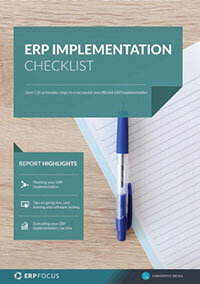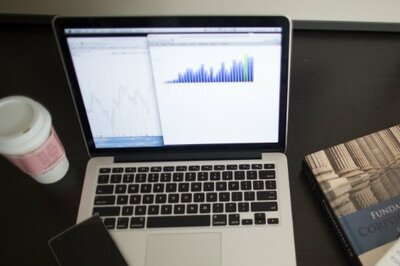ERP BI: the User Interface
For many people, the BI user interface will be the only part of ERP they ever see. For many others, BI will serve as a surrogate measurement for the quality of the ERP design. Most users will not distinguish between Business Intelligence and ERP as two different subjects. For all of these reasons, it is important to provide the end users with the best BI interface possible.
The first important strategic decision is to decide where to position the organization on a trade-off between flexibility and reliability. The definition of these two things in this context is (a) at the extreme of infinite flexibility, any business person can ask any reasonable business question and construct an answer by assembling an intelligent query in real time (b) reliability refers to prefabricated queries presented in table, report, or graphical format which are guaranteed accurate but may not be altered or tweaked. The most value for an organization comes from a high degree of flexibility, (leveraging the curiosity of many people) but that requires a query language that is highly intuitive and easy to work with. If you aim for high flexibility and have a difficult query process, you will end up with frustrated customers and erroneous information.
Dashboards
Another decision to be made is where to go – if anywhere - with ERP BI “dashboards”. By dashboards, I am referring to a group of graphical representations of business performance arranged on a computer screen. Dashboards are very fashionable to think about, but the line separating useful from “bells and whistles” is pretty thin. What constitutes a “problem” is not always clear-cut, and often there is no immediate corrective action to be taken. But the visual of an executive dashboard makes a memorable impact in a sales presentation, and for many executives, that is the expected endpoint of ERP.
Further Reading: Free White Paper 60 step ERP selection checklist
The final consideration in your choice of end user interface is to accurately assess what degree of sophistication you had with legacy business intelligence. This will be a good guide to what your end user community is comfortable with, and where their expectations are. If your ERP user interface is better than what they currently have, you will be a hero; if it is worse than they have now, it will cloud the entire implementation.
The decision on what Business Intelligence user interface to use can easily be the most underrated ERP decision the team engages in. Most people purchase their ERP vendor’s data analysis package, assuming it will be both world class and a custom fit with the software. Do not assume either. If you can, postpone the purchase decision for your data analysis tool until you thoroughly understand its capabilities. Listen to your IT professionals, but do not abdicate the decision – IT people will likely advise in favor of things that are reliable and easy to support, not necessarily effective to use. Listen more to business users, and involve them in the selection. The decision you make is vitally important.
Free white paper

ERP Implementation Checklist
Over 120 actionable steps to implementing a new ERP successfully

Related articles
-

ERP reporting: 5 features to consider for your system
Find out how ERP reporting features can influence user buy-in, business agility and financial com...
-

CMMC Compliance: What Aerospace and Defense Manufacturers Need to Know
Key insights on CMMC compliance, deadlines, and securing DoD contracts with CMMC 2.0 certificatio...
-

6 features to look out for in your next ERP BI module
Find out more about the core business intelligence features which ERP software can provide to you...

